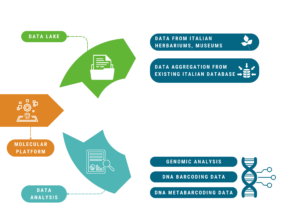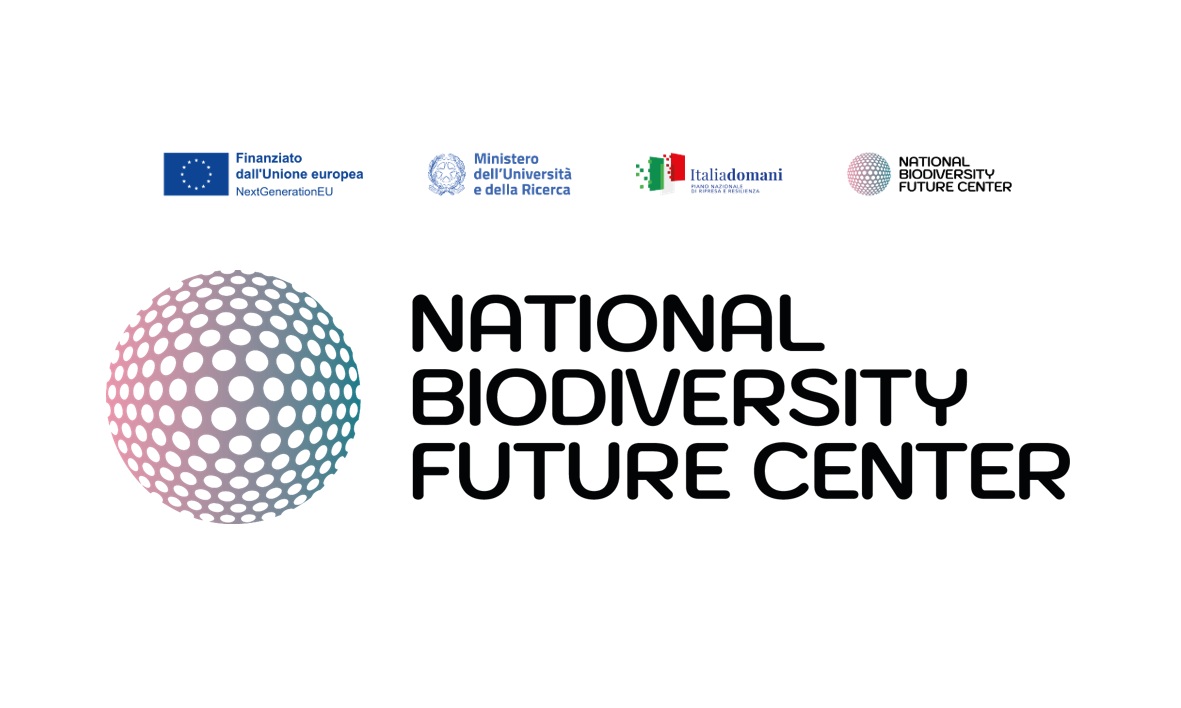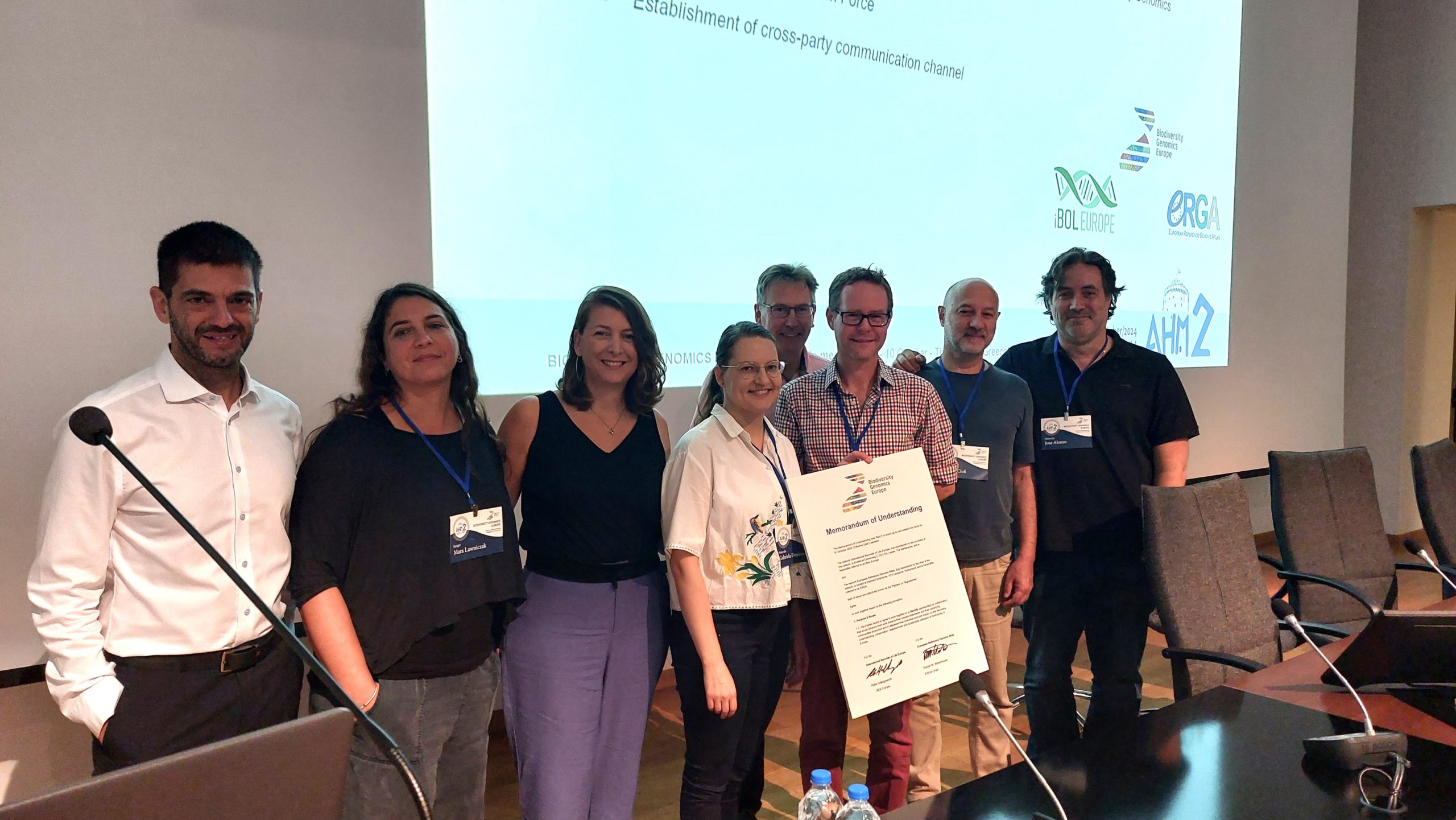National Biodiversity Future Center: A molecular platform for Italian biodiversity monitoring, conservation and restoration
Guest blog by Jessica Frigerio, Andrea Galimberti & Massimo Labra
Mediterranean biodiversity is under threat due to phenomena of global and local concern such as climate change, sea-land use alteration and the introduction and outbreaks of invasive species. Immediate actions informed by reliable monitoring tools and strategies are required to conserve and restore Mediterranean biodiversity. This requirement complies with the EU 2030 Biodiversity Strategy, which intends to address the main drivers of biodiversity loss and set legally binding targets.
 Identifying even described species is often difficult, and knowledge of their distributions, variation, properties, interdependencies, and conservation status remains patchy and incomplete. While museum collections and morphology-based studies have been invaluable for biodiversity studies to date, these need refinement and expansion to address our patchy knowledge on a wider, territory-based scale to mitigate the loss of habitats and species diversity. Large-scale DNA barcoding approaches have transformed the speed at which the inventory of life will be completed and have provided the foundations of a global, standardized bio-surveillance system for biodiversity. This includes several complete DNA barcoding studies published by Italian researchers on groups including the dragonflies and damselflies, butterflies, and bats [1-4]. In addition, many other taxa have been partially studied from a ‘molecular’ point of view, but a considerably portion of Italy’s biodiversity remains understudied.
Identifying even described species is often difficult, and knowledge of their distributions, variation, properties, interdependencies, and conservation status remains patchy and incomplete. While museum collections and morphology-based studies have been invaluable for biodiversity studies to date, these need refinement and expansion to address our patchy knowledge on a wider, territory-based scale to mitigate the loss of habitats and species diversity. Large-scale DNA barcoding approaches have transformed the speed at which the inventory of life will be completed and have provided the foundations of a global, standardized bio-surveillance system for biodiversity. This includes several complete DNA barcoding studies published by Italian researchers on groups including the dragonflies and damselflies, butterflies, and bats [1-4]. In addition, many other taxa have been partially studied from a ‘molecular’ point of view, but a considerably portion of Italy’s biodiversity remains understudied.
 Italian biodiversity is remarkably rich and varied due to its geographical location and the diversity of climates and habitats, ranging from the forests and mountains of the Alps and the Apennines to the Mediterranean coast. Italy is considered one of the most biodiverse countries in Europe, hosting a wide range of animal and plant species. The Italian flora comprises over 7,000 species of vascular plants, many of which are endemic to the Italian territory. The Italian fauna is among the richest in Europe, representing more than a third of all European fauna with 57,000 species, 10% of which are endemic species (especially invertebrates). Italy hosts 340 species protected under the Habitats Directive – approximately 25% of the total of the Habitats Directive’s species – and 297 protected birds, roughly 65% of the species protected under the Birds Directive.
Italian biodiversity is remarkably rich and varied due to its geographical location and the diversity of climates and habitats, ranging from the forests and mountains of the Alps and the Apennines to the Mediterranean coast. Italy is considered one of the most biodiverse countries in Europe, hosting a wide range of animal and plant species. The Italian flora comprises over 7,000 species of vascular plants, many of which are endemic to the Italian territory. The Italian fauna is among the richest in Europe, representing more than a third of all European fauna with 57,000 species, 10% of which are endemic species (especially invertebrates). Italy hosts 340 species protected under the Habitats Directive – approximately 25% of the total of the Habitats Directive’s species – and 297 protected birds, roughly 65% of the species protected under the Birds Directive.
To preserve this incredible richness, the Italian National Biodiversity Future Center NBFC (https://www.nbfc.it/en) has been funded under the National Recovery and Resilience Plan (PNRR) as the first national research center dedicated to the conservation, restoration and management of Italian and Mediterranean biodiversity. It is composed of about 2,000 researchers belonging to 48 partner  organizations (universities and research institutes) working on biodiversity topics. One of the goals of the NBFC is to develop a molecular repository to address species identification and monitoring by leveraging expertise in DNA barcoding, metabarcoding and whole genome sequencing of emblematic species. The project aims to collect and analyse samples of the majority of Italian species including endemic, vulnerable, rare and/or those relevant to ecosystem functioning.
organizations (universities and research institutes) working on biodiversity topics. One of the goals of the NBFC is to develop a molecular repository to address species identification and monitoring by leveraging expertise in DNA barcoding, metabarcoding and whole genome sequencing of emblematic species. The project aims to collect and analyse samples of the majority of Italian species including endemic, vulnerable, rare and/or those relevant to ecosystem functioning.
The DNA barcode sequences will be generated from herbaria and museum collections, supplemented with fresh samples. In the case of herbarium and museum samples, a digitalized reference image database will also be assembled. Additionally, a national effort will be conducted to aggregate Italian DNA barcode sequences already deposited in international databases.

The NBFC Molecular Platform will be integrated with tools for genomic analysis and for processing DNA barcoding and metabarcoding data, with the option to utilize validated restricted databases (e.g. for pollinators, urban tree species, etc.). These genetic reference databases will support researchers who are interested in studying Italian biodiversity at the local or national scale to address theoretical or applicative purposes (e.g. conservation, evolution, early-warning detection of rare or problematic species). Moreover, the molecular platform will provide a connection to large international initiatives in molecular characterization of biodiversity, such as the International Barcode of Life (iBOL) and BOLD Systems. Finally, it will support public and private institutions and industrial stakeholders for biodiversity monitoring, molecular traceability, bioprospecting, and industrial biotechnology.
will support researchers who are interested in studying Italian biodiversity at the local or national scale to address theoretical or applicative purposes (e.g. conservation, evolution, early-warning detection of rare or problematic species). Moreover, the molecular platform will provide a connection to large international initiatives in molecular characterization of biodiversity, such as the International Barcode of Life (iBOL) and BOLD Systems. Finally, it will support public and private institutions and industrial stakeholders for biodiversity monitoring, molecular traceability, bioprospecting, and industrial biotechnology.
If you would like to contact the NBFC, please get in touch at molecular_biodiversity@nbfc.it
References:
- Galimberti, A., Assandri, G., Maggioni, D., Ramazzotti, F., Baroni, D., Bazzi, G., … & Casiraghi, M. (2021). Italian odonates in the Pandora’s box: A comprehensive DNA barcoding inventory shows taxonomic warnings at the Holarctic scale. Molecular Ecology Resources, 21(1), 183-200.
- Galimberti, A., Martinoli, A., Russo, D., Mucedda, M., & Casiraghi, M. (2010). Molecular identification of Italian Mouse-eared bats (genus Myotis).
- Dapporto, L., Cini, A., Vodă, R., Dincă, V., Wiemers, M., Menchetti, M., … & Vila, R. (2019). Integrating three comprehensive data sets shows that mitochondrial DNA variation is linked to species traits and paleogeographic events in European butterflies. Molecular Ecology Resources, 19(6), 1623-1636.
- Dapporto, L., Menchetti, M., Vodă, R., Corbella, C., Cuvelier, S., Djemadi, I., … & Vila, R. (2022). The atlas of mitochondrial genetic diversity for Western Palaearctic butterflies. Global Ecology and Biogeography, 31(11), 2184-2190.




